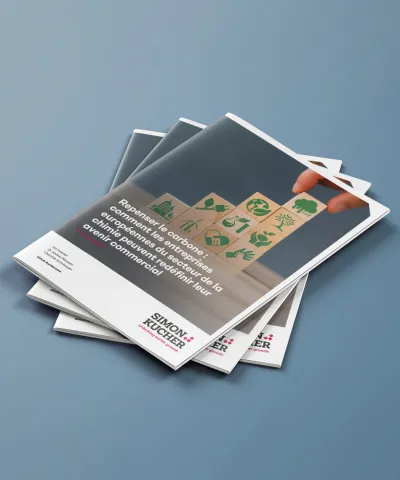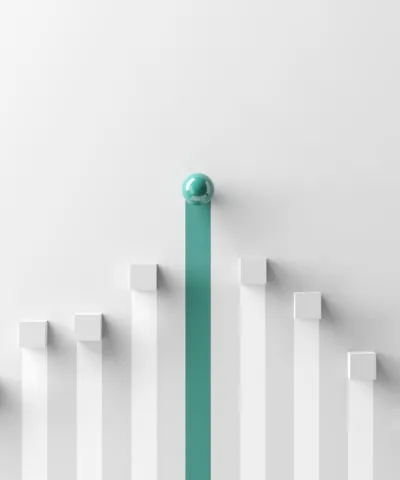71% of global consumers are making changes to the way they live and the products they buy in an effort to live more sustainably. It’s clear that companies need to put these concerns at the heart of their go-to-market strategies – or risk being left behind.
For those companies who wish to keep up, it will require more than simply delivering new products and services. Consumers are looking for brands that align with their values, attitudes, and behaviors. Whether you’re at the start of your sustainability journey or ready to level-up, now is the time to take that next step.
At Simon-Kucher, we look at sustainability from a consumer perspective and translate their behavior into actions our clients can take. By focusing on the growth opportunities, we can create positive sustainable transformation for companies, their customers and wider communities.
Sustainability is here to stay
We surveyed more than 11,500 consumers around the world. We had representation across all generations to understand their attitudes towards sustainability, its importance, barriers to sustainable purchasing, and how willing they are to pay for sustainability. We defined sustainability as environmental. Specifically, production, sourcing and distribution practices that save natural resources, reduce emissions, and reduce waste.
The results? Sustainability is much more than a trend for companies – it’s the requirement. Period.
Sustainability is fast becoming table stakes
75% of global consumers feel that environmental sustainability is as important or more to them now than it was last year. Additionally, 66% of consumers rank sustainability as one of the top five drivers behind a purchase decision – up from 50% last year.
The shift to more sustainable practices is now inevitable. Similarly, to the embrace of technology over the last century, embracing the shift will be non-negotiable for companies who wish to stay relevant.
While demand is strong, there are still barriers
We are seeing more consumers report that they’re changing their habits and are committed to living a more sustainable life.
In fact, 71% of global consumers have made modest to significant changes to their consumption behaviors over time in an effort to live more sustainably. And if we include consumers that have also made minor changes, 89% have become 'greener' in their purchasing.
On average, 32% of all consumers are willing to pay more for sustainable products and services across categories. But how much of a premium do they expect? This ranges from 22-40%, depending on the industry and regardless of how the consumer views the importance of sustainability. However, the remaining 68% of consumers are not willing to pay a premium. Both of these opposing factors provide guidance to companies when pricing their sustainable products and services.
And yet, that doesn’t quite tell the full story. While consumers are becoming more sustainable, there are still challenges and barriers. These challenges represent opportunities for companies to address in their efforts to capture this green demand. These are:
Lack of affordability
As mentioned above, consumers are changing their habits to be more sustainable, and many are even willing to pay extra for it. However, for one-third of consumers, the biggest barrier is that sustainable goods and options are too expensive.
Furthermore, recent inflationary pressures have further dampened sustainable purchasing. Consumers are either less likely to buy sustainable due to inflation of their prices or are more selective in which categories to be sustainable in as their wallets are being stretched thin.
Despite these headwinds, there is still a strong business case to become sustainable. Now is the time for companies to innovate in order to become sustainable market leaders in their industries.
Lack of availability
25% of consumers have difficulty sourcing sustainable products in the places they typically shop. Meaning it could be difficult for them to find the product itself or have difficulty realizing which products and services are indeed sustainable.
To meet the expectations of consumers, companies that offer sustainable products should meet consumers where they typically shop.
In consumer goods, for example, revisiting distribution policies and offering product placement incentives to retailers can increase visibility of sustainable alternatives.
Lack of trust
Even when consumers can access sustainable products, there can be a lack of clarity over their sustainability credentials. 21% of consumers don’t trust sustainability claims made by companies and are concerned about greenwashing.
Clear communication is vital to avoid potential backlash. Avoid vague statements or claims. Be honest, be consistent, and get a deeper understanding of what consumer expect when making a claim.
Consumers are quick to identify insincerity. For example, do not have sustainable messaging regarding offsetting carbon emissions while having unnecessary plastic wrapping. Above all, make these claims visible through brand positioning, packaging, or third-party quality certifications.
Messaging matters
Key differences around the world bring the power of culture to light, and show the impact messaging can have on the way sustainability is perceived.
Consumers need to trust that companies care about the same sustainability motivators as them.
- For 64%, that’s ‘a sense of responsibility’
- For 48%, it’s ‘fear of environmental damage’
- And for 44%, it’s ‘for the benefit of younger generations’
On the other hand, 14% of consumers don’t believe that sustainable alternatives are indeed sustainable due to greenwashing of messages and packaging.
It’s no longer enough for companies to gesture towards sustainability, their messaging needs to align with their consumers to forge connections.
The best way to get your messaging right? A carefully designed sustainability strategy.
How we can help you evolve
Our experts have helped build sustainability strategies across countless industries. And our 2022 study gives us the advantage of knowing what your consumers need and expect right now. That kind of data is what helps companies thrive.
No matter what stage you’re at right now, we can analyze what matters to your customers, what you need to do to build their trust and reassure them that you’re every bit as committed to sustainability as they are.
We’ll work with your team to understand how you can take your product or service to market, define a clear commercial strategy, and help you grow through uncertainty. It’s time to embrace a sustainable future.








